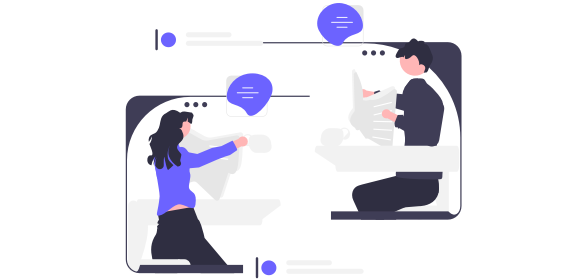How to Transcribe Meetings for Efficient Summaries
Every professional knows the frustration of frantically scribbling notes while trying to stay engaged in a meeting. You’re splitting your attention between listening, participating, and capturing important details—and inevitably, something gets missed. Studies show that employees spend an average of 4-5 hours weekly documenting meetings, time that could be spent on strategic work. Manual note-taking doesn’t just drain productivity; it creates inconsistent records where critical decisions and action items slip through the cracks. Meeting transcription offers a practical solution to reclaim these lost hours while improving accuracy. By automatically converting spoken conversations into searchable text, transcription technology delivers immediate benefits: comprehensive documentation without distraction, instant identification of action items, and polished meeting summaries ready for distribution. This guide walks you through selecting the right transcription tools, implementing an efficient workflow, and transforming raw transcripts into actionable summaries that keep your team aligned and moving forward.
Why Meeting Transcription Matters for Professionals
Manual note-taking creates a false choice between active participation and thorough documentation. When you’re typing or writing, you’re not fully present for critical discussions. Research shows that multitasking during meetings reduces comprehension by up to 40%, meaning the notes you’re struggling to capture may miss the very context that makes them useful. Handwritten notes often become indecipherable hours later, and typed notes rarely capture verbatim quotes needed for clarification or accountability.
Meeting transcription eliminates this compromise entirely. With automated recording and transcription, every participant can focus completely on the conversation, asking questions and contributing ideas without worrying about documentation gaps. The resulting transcript provides an accurate, searchable record that settles disputes about what was actually said or decided. When a colleague claims they never agreed to a deadline or a stakeholder questions a budget figure, you have definitive proof rather than conflicting recollections.
The time savings extend beyond the meeting itself. Instead of spending 30-45 minutes after each session cleaning up fragmented notes, you receive a complete transcript within minutes. This accelerates the creation of meeting summaries, cutting distribution time from hours to minutes. Teams report reclaiming 3-4 hours weekly previously lost to note reconstruction. Perhaps most valuable, transcription creates institutional knowledge. New team members can review past discussions, and anyone who missed a meeting can catch up thoroughly rather than relying on secondhand summaries that inevitably omit nuance and context.
Essential Transcription Tools Comparison
AI-Driven Transcription Platforms
Modern AI transcription platforms achieve 85-95% accuracy rates for clear audio, with leading services reaching near-perfect transcription in controlled environments. These cloud-based solutions integrate directly with Zoom, Microsoft Teams, and Google Meet, automatically joining scheduled meetings and delivering transcripts within minutes of completion. Advanced algorithms distinguish between multiple speakers, labeling contributions by voice pattern even when participants aren’t formally introduced. For business users, enterprise-grade platforms offer SOC 2 compliance, end-to-end encryption, and data residency options that satisfy legal and regulatory requirements. The ability to transcribe audio to text in real-time means you can search conversations as they happen, jumping to specific topics without reviewing entire recordings.
Dedicated Hardware Solutions
Standalone voice recorders with built-in transcription serve professionals working in locations with unreliable internet or strict device policies. These devices capture high-fidelity audio through omnidirectional microphones optimized for conference room acoustics, then process recordings locally without cloud dependency. Battery life typically ranges from 8-20 hours of continuous recording, sufficient for full-day workshops or multi-session events. Most models export files in standard formats compatible with desktop transcription software, enabling a hybrid workflow where you record offline but leverage cloud AI for processing later. This approach works particularly well for legal depositions, medical consultations, and field research where connectivity isn’t guaranteed.
Evaluating Cost vs. Accuracy
Free transcription tools deliver acceptable results for informal meetings but struggle with accents, technical terminology, and overlapping speech—often requiring 15-20 minutes of manual correction per hour of audio. Premium services justify their cost through specialized dictionaries that recognize industry jargon, reducing editing time to 5 minutes or less per transcript. When evaluating options, calculate your effective hourly cost: if corrections consume more time than the subscription saves, you’re losing money on “free” tools. Team collaboration features like shared transcript libraries, commenting systems, and role-based access controls become essential as your organization scales beyond individual use.
Step-by-Step Meeting Transcription Process
Pre-Meeting Preparation
Begin by testing your recording setup 10-15 minutes before the scheduled start time. Launch your transcription software and record a 30-second test clip, then play it back to verify audio clarity and volume levels. Position microphones or recording devices within 3-5 feet of primary speakers for optimal capture. If you’re using video conferencing tools, confirm that the transcription bot has calendar access and will automatically join at the scheduled time. Address consent requirements by notifying all participants that the meeting will be recorded and transcribed—most jurisdictions require verbal or written acknowledgment. Send the meeting agenda 24 hours in advance; this context helps AI algorithms anticipate technical terms and topics, improving accuracy by 10-15%. Choose quiet locations away from HVAC vents, traffic noise, and high-traffic hallways that introduce background interference.
During-Meeting Best Practices
Ask participants to state their names before speaking for the first time, which helps transcription software assign dialogue correctly throughout the session. When multiple people talk simultaneously, designate a facilitator to manage turn-taking—overlapping speech reduces accuracy by up to 30% and creates unintelligible transcript sections. Use your transcription platform’s timestamping feature to mark critical moments: when a decision is finalized, action items are assigned, or contentious points require follow-up. Simply clicking a “bookmark” or typing a brief tag creates navigable anchors in the final transcript. Always maintain a backup recording method—a smartphone voice memo or secondary recording device—in case your primary system fails due to connectivity issues or software crashes. This redundancy has saved countless meetings from complete documentation loss.
Post-Meeting Transcription Workflow
Cloud-based platforms typically process recordings automatically, delivering transcripts within 5-15 minutes depending on meeting length and service load. For manual uploads, drag audio or video files directly into your transcription dashboard and select the appropriate language and speaker count settings. While AI processes the file, review any timestamped bookmarks you created during the meeting—these will become navigation points for summary creation. Once the transcript arrives, scan for obvious errors like misheard names or technical terms, making quick corrections before wider distribution. Apply consistent formatting: separate speaker labels on their own lines, break long monologues into logical paragraphs, and remove filler words like “um” and “uh” that clutter readability. Before sharing, redact any confidential information such as unreleased product names, salary figures, or client identities that shouldn’t appear in permanent records. When you transcribe meetings consistently using this workflow, the entire process from recording to polished transcript takes under 20 minutes.
Transforming Transcripts into Actionable Summaries
A raw transcript captures everything said but lacks the structure needed for quick reference. The transformation begins with identifying action items—specific tasks requiring completion with clear ownership. Search your transcript for commitment language like “I’ll handle,” “we need to,” or “by Friday,” then extract these statements into a dedicated section. Each action item should specify what needs doing, who’s responsible, and the deadline. When someone says “I’ll send the budget draft to finance next week,” convert this to “John Smith: Send budget draft to finance team by March 15.”
Distinguish between decisions and discussions by flagging conclusive statements. Phrases like “we’ve agreed,” “the final decision is,” or “moving forward with” signal resolved matters that should appear prominently in your summary. Discussions that didn’t reach resolution belong in a separate “open items” category requiring follow-up in future meetings. This separation prevents teams from assuming debated topics were settled.
Condense lengthy exchanges by grouping related comments under topic headers. If fifteen minutes covered budget allocation, create a “Budget Discussion” section summarizing the key points and outcome rather than reproducing every comment. Use brief bullet points only for lists of discrete items like attendees or agenda topics—narrative paragraphs work better for capturing nuance and context. Most meeting summaries should fit on one page, highlighting the 20% of content that drives 80% of follow-up work. Standardize your format with a template containing sections for attendees, decisions made, action items with owners, and next meeting date. This consistency helps recipients quickly locate the information they need without reading entire documents.
Advanced Optimization Techniques
Custom vocabulary libraries dramatically improve transcription accuracy for specialized industries. Most premium platforms allow you to upload glossaries containing technical terms, product names, acronyms, and proper nouns specific to your organization. A pharmaceutical company might add drug names and clinical trial terminology, while a law firm would include case citations and legal Latin phrases. This customization reduces misinterpretations from 15-20 per transcript to fewer than five, cutting correction time in half. Update your vocabulary list quarterly as new terminology enters your workflow.
Automated speaker labeling eliminates the tedious task of manually identifying who said what. Train your transcription system by uploading sample audio files for each regular participant—most AI platforms need just 5-10 minutes of speech per person to create reliable voice profiles. Once configured, the system automatically tags contributions even in large group meetings, maintaining accuracy above 90% for enrolled speakers. Services like Owll AI use advanced voice recognition to distinguish between speakers, which proves invaluable when distributing transcripts to stakeholders who weren’t present, providing immediate context about who advocated for specific positions.
Calendar integration creates seamless automation where transcription happens without manual intervention. Connect your transcription platform to Outlook, Google Calendar, or your corporate scheduling system so recording bots automatically join meetings based on calendar invites. Set rules to exclude certain meeting types—one-on-ones or confidential HR discussions—while capturing all team standups and client calls. Establish a centralized transcript archive organized by date, project, or department with robust search functionality. When someone asks “What did we decide about the vendor contract in August?” you can locate the exact discussion in seconds rather than digging through email threads or fragmented notes.
Implementing Your Meeting Transcription Strategy
Meeting transcription transforms hours of scattered note-taking into minutes of automated documentation, returning 3-4 hours weekly to your most valuable work. Beyond time savings, accurate transcripts eliminate the accountability gaps and missed details that plague manual records, creating searchable archives where every decision and commitment is preserved exactly as stated. Before your next meeting, complete this implementation checklist: select a transcription platform matching your accuracy and security requirements, test your recording setup to ensure clear audio capture, establish consent protocols with your team, and create a standardized summary template for consistent distribution. Most services offer free trials—start with one recurring meeting to experience the difference firsthand. Record it, let AI handle transcription, then spend ten minutes creating a polished summary instead of reconstructing notes from memory. As remote and hybrid work becomes permanent, the organizations that master efficient meeting documentation will outpace competitors still trapped in manual processes. Your meetings already happen; make sure the insights they generate don’t disappear the moment everyone logs off.

